- The Federal Reserve concludes its June policy meeting today at 2 PM EST
- Increased concerns that it will hike rates more aggressively than already expected, risking recession
- Investors seeking compelling returns should consider buying Hess, Kellogg, and AT&T
- For tools, data, and content to help you make better investing decisions, try InvestingPro+.
- Year-To-Date Performance: +62.2%
- Market Cap: $37.1 Billion
- Year-To-Date Performance: +6.1%
- Market Cap: $23.1 Billion
- Year-To-Date Performance: +4.7%
- Market Cap: $139.2 Billion
Market participants have dramatically raised their bets in recent days that the Federal Reserve will hike interest rates even more aggressively than already anticipated to try tame soaring inflation.
Investing.com’s Fed Rate Monitor Tool, which had been strongly pointing to a 50 basis points (bps) hike at the Fed’s June policy meeting, was now showing a more than 90% probability of a 75 bps move. If confirmed, it would be the biggest Fed rate hike since 1994.
These bets on a more aggressive tightening follow an upside surprise in the May inflation data released late last week, sending shockwaves across the stock market.
The benchmark S&P 500 index is now down 22% from its Jan. 3 record close, surpassing the 20% pullback threshold used to define a bear market.
Meanwhile, the tech-heavy NASDAQ Composite, which slumped into a bear market earlier this year, is approximately 33% below its Nov. 19, 2021, record level and the Dow Jones is roughly 18% off its reported high.
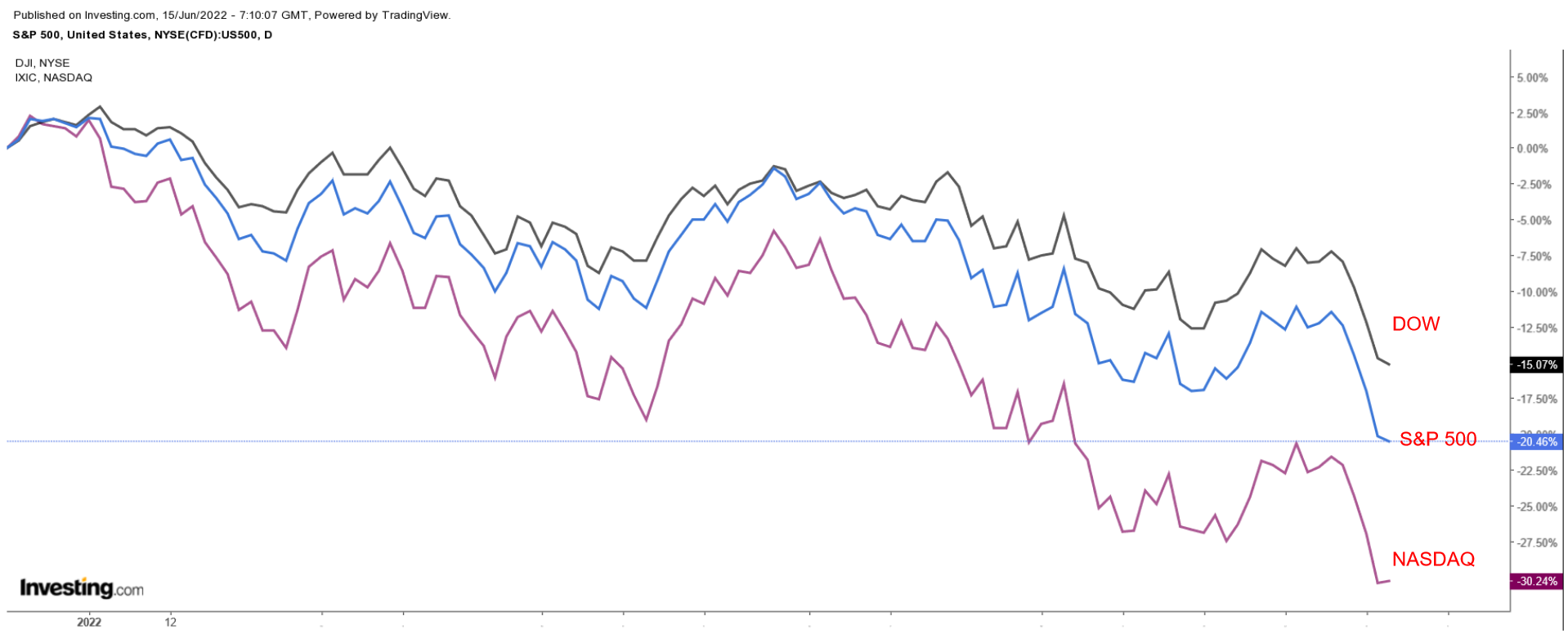
Taking that into account, we highlight three year-to-date winners set to outperform in the weeks and months ahead as investors brace for aggressive Fed rate hikes and a possible recession.
1. Hess Corporation
Hess Corporation (NYSE:HES) is one of the leading energy companies in the US. Its core business operations involve exploring, producing, and transporting crude oil, natural gas, and natural gas liquids (NGLs).
Its main assets are located primarily in the Bakken shale play in the Williston Basin area of North Dakota. It has also exploration and production operations in the Gulf of Mexico, Libya, Canada, South America, and Southeast Asia.
The New York City-based company has been a standout performer in the booming energy sector this year, reaping the benefits of higher oil and gas prices.
Shares of HES, which are up around 62% in 2022, rose to $131.43 on June 8, a level not seen since May 2008; it ended Tuesday’s session at $120.07. At current valuations, the energy firm has a market cap of $37.1 billion.
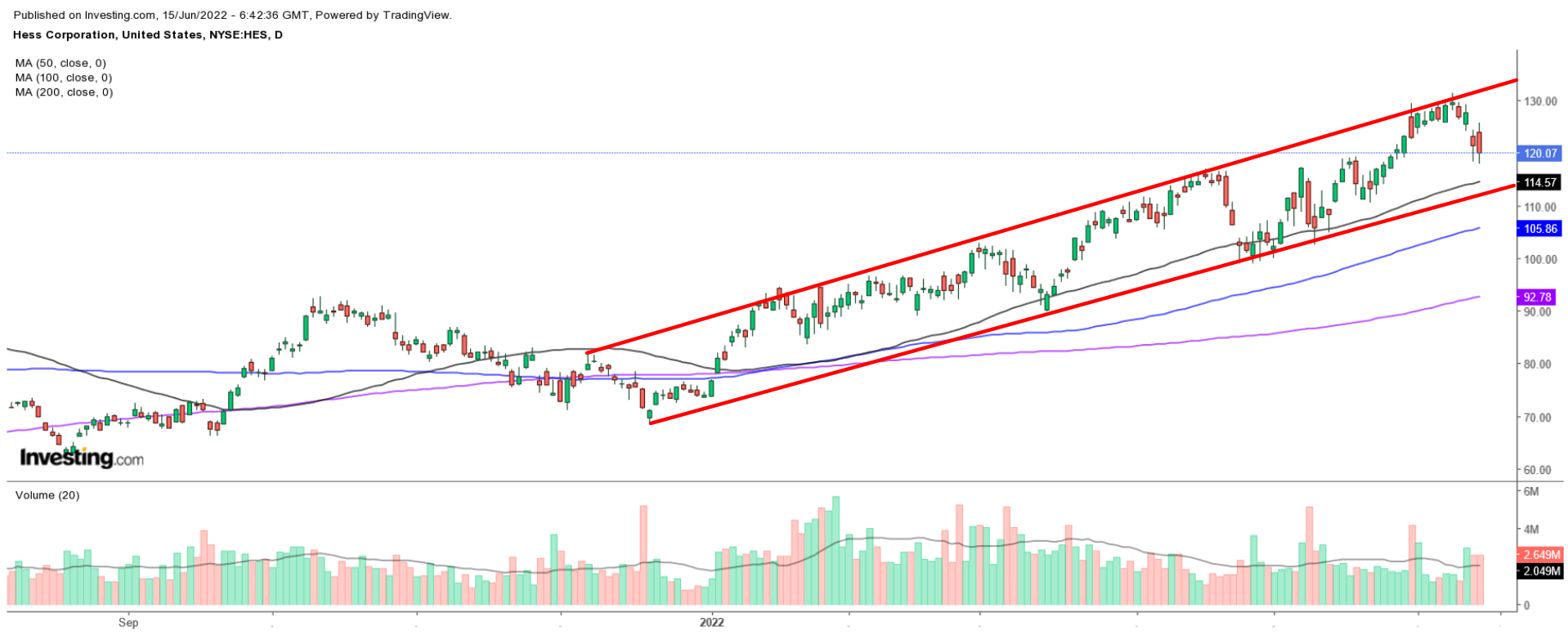
Despite extraordinary year-to-date returns, Hess remains one of the best stocks to hedge against further market turmoil due to its continuous efforts to return more cash to investors in the form of higher dividends and stock buybacks.
The oil-and-gas production company recently raised its quarterly dividend payout by 50% to $0.375 per share. This represents an annualized dividend of $1.50 and a yield of 1.23%.
Hess is poised to continue to benefit from its stellar global operations while taking advantage of strong energy prices and improving demand, which will help drive future profit and sales growth.
Not surprisingly, in an Investing.com survey of 23 analysts, 15 rated HES stock as a ‘buy,’ eight rated it as ‘neutral,’ and none considered it a ‘sell.’ Among those surveyed, the stock had a roughly 14% upside potential with an average 12-month price target of $136.43.
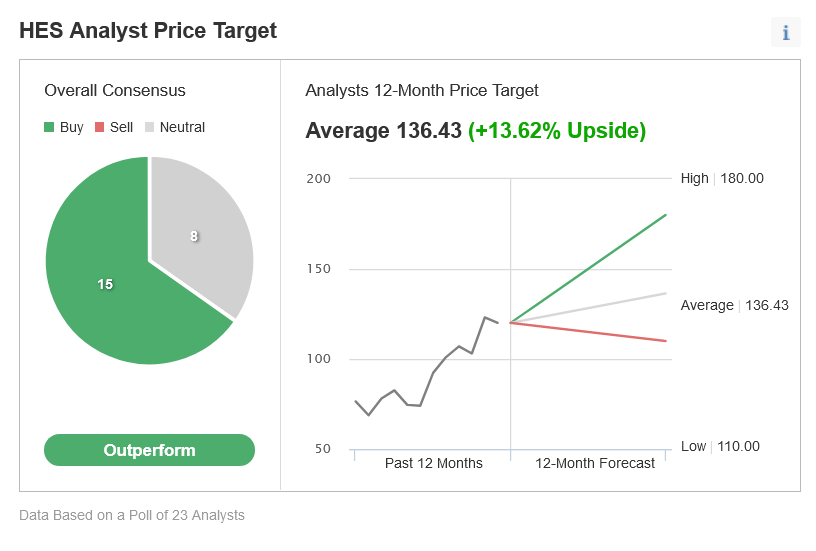
Source: Investing.com
Likewise, according to a number of valuation models, including P/E or P/S multiples or terminal values, the average fair value for HES stock on InvestingPro+ stands at $130.55, a potential 8.7% upside from the current market value.
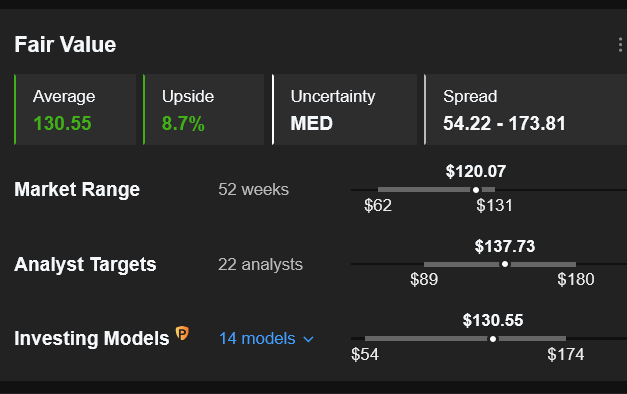
Source: InvestingPro+
2. Kellogg
As one of the world's leading food manufacturing companies, Kellogg (NYSE:K) is best known for producing snacks, such as crackers, toaster pastries, and potato chips, as well as convenience foods, including cereals, and frozen waffles.
Some of its most recognizable brands—which are marketed and sold in over 180 countries—include Frosted Flakes, Froot Loops, Rice Krispies, Pop-Tarts, Cheez-Its, and Pringles. Its portfolio also includes frozen food brands Eggo, and Morningstar Farms.
In our view, shares of the Battle Creek, Michigan-based company are well-positioned to extend their march higher in the weeks ahead as investors pile into defensive areas of the consumer staples sector amid the current market rout.
Year-to-date, Kellogg shares have gained 6.1%, easily outpacing the comparable returns of the broader market as well as other notable names in the packaged food space, such as Kraft Heinz (NASDAQ:KHC), General Mills (NYSE:GIS), Hormel Foods (NYSE:HRL), and Conagra Brands (NYSE:CAG).
K climbed to its highest level since February 2017 last month and closed at $68.34 last night, earning it a valuation of $23.1 billion.

Kellogg’s relatively low valuation, combined with its ongoing efforts to return more capital to shareholders, make it an even more attractive option for investors looking to shield themselves from further Fed-induced volatility.
With a reasonable price-to-earnings (P/E) ratio of 15.2, K comes at a significant discount when compared to its notable peers, which have a collective P/E ratio of 22.2.
The packaged food giant is also a quality dividend stock. K currently offers a quarterly payout of $0.58 per share, which implies an annualized dividend of $2.32 at a yield of 3.32%, one of the highest in the sector.
Indeed, the average fair value for K stock stands at $82.69, according to a number of valuation models on InvestingPro, showing a potential 21% upside from the current market value.

Source: InvestingPro+
3. AT&T
AT&T (NYSE:T) the world's largest telecommunications company and the leading provider of mobile telephone services in the U.S., has taken drastic measures over the last 12 months to return to its telecom roots as it transitions from a struggling media conglomerate into a more streamlined organization with a cleaner balance sheet.
The Dallas, Texas-based blue-chip, which separated its DirecTV satellite TV business last year, divested itself of its Warner Media entertainment unit in April, merging it with Discovery to form a new, publicly traded company, Warner Bros. Discovery (NASDAQ:WBD).
Now, under new management, AT&T is refocusing its efforts on the US wireless and home broadband markets, offering a variety of 5G wireless and fiberoptic broadband services.
AT&T shares are up roughly 5% year-to-date. Last night, T ended at $19.45, not far from a recent 10-month peak of $21.53 reached on May 26. At current levels, the telecom giant has a market cap of $139.2 billion.
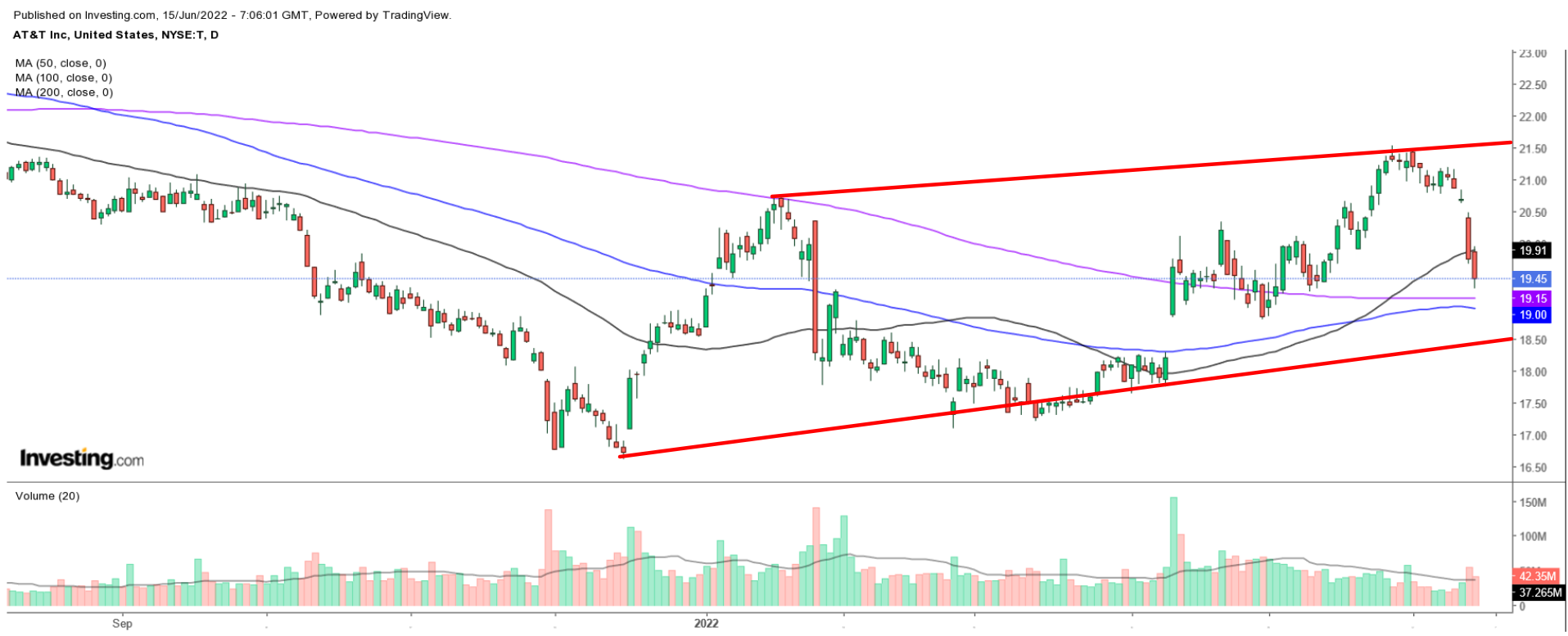
Despite cutting its dividend payout following the overhaul of its media and telecommunications portfolio, AT&T is still one of the 10 highest-yielding stocks in the S&P 500.
The wireless phone carrier currently offers a quarterly dividend of $0.2775 per share, which implies an annualized payout of $1.11 per share at a yield of 5.67%, more than triple the implied yield for the S&P 500, which is 1.55%.
Additionally, with a P/E ratio of 8.2, AT&T’s stock comes at a discount when compared to other notable telecom companies, such as Verizon (NYSE:VZ), and T-Mobile US (NASDAQ:TMUS), which have P/E ratios of 9.7 and 55.7, respectively.
Indeed, 11 out of 28 analysts surveyed by Investing.com rate AT&T’s stock as ‘buy’, while 14 considered it as a ‘hold.’ Just three out of the 28 had a ‘sell’ recommendation on the name.
The average T stock analyst price target is around $24.00, representing an upside of approximately 23% from current levels over the next 12 months.

Source: Investing.com
Similarly, the quantitative models in InvestingPro+ point to a gain of roughly 30% in T stock from current levels over the next 12 months, bringing shares closer to their fair value of $25.30.
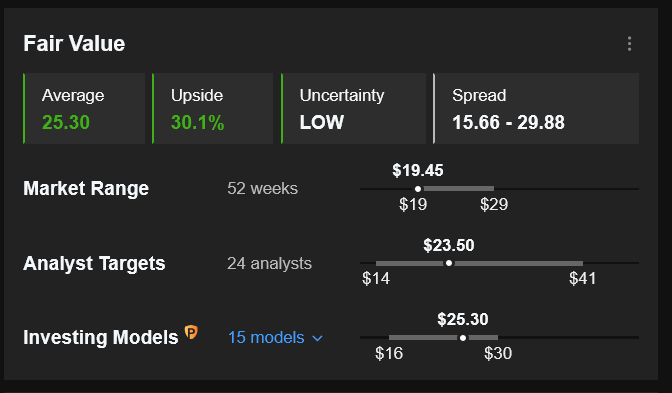
Source: InvestingPro+
***
Interested in finding your next great idea? InvestingPro+ gives you the chance to screen through 135K+ stocks to find the fastest growing or most undervalued stocks in the world, with professional data, tools, and insights. Learn More »
